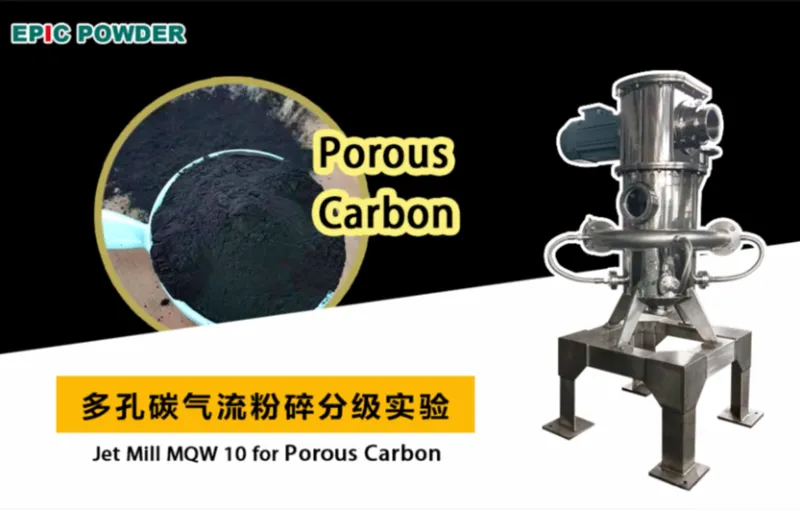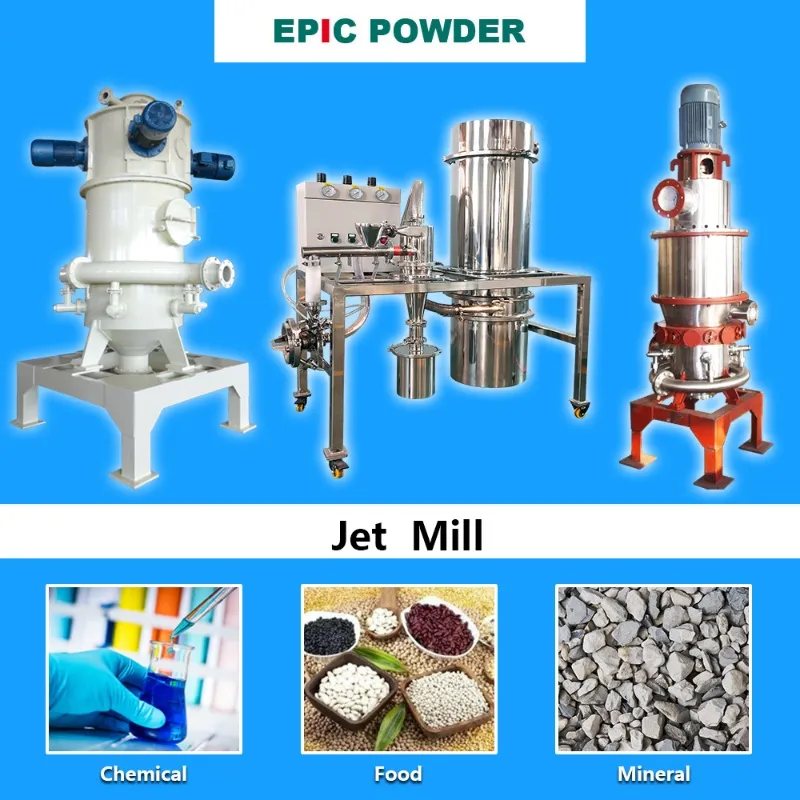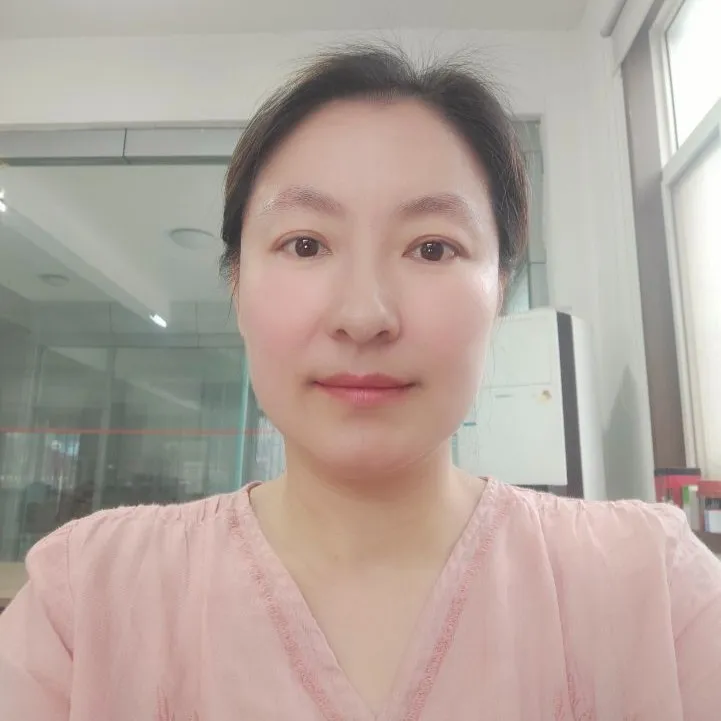An advanced porous carbon jet pulverizer delivers ultra-fine grinding with precise D50 below 2 microns and contamination-free milling for next-generation battery anode materials.
Porous carbon—particularly silicon–carbon composites—is reshaping the performance standards of modern high-energy batteries. However, achieving ultra-fine, contamination-free particle sizes while preserving the delicate porous structure remains extremely challenging. Traditional mechanical mills struggle to meet these requirements. This is why the jet pulverizer, especially the fluidized bed jet mill, has become the preferred technology for processing fragile, heat-sensitive porous carbon materials.
If you work in battery manufacturing or R&D, understanding why a porous carbon jet pulverizer provides unmatched particle size control, purity, and pore integrity is essential to staying competitive in 2025 and beyond. The following sections explain how this advanced milling solution is redefining the processing of next-generation anode materials.

What Is Porous Carbon and Why Is It Difficult to Mill?
Porous carbon materials play a crucial role in modern battery systems. These include silicon-carbon composites, resin-based carbons, biomass-derived carbons, coal-based carbons, and hard carbons. Each material type contributes to improved energy density, faster charge rates, and longer cycle life.
Yet, porous carbon presents several unique milling challenges:
- High porosity and low density: The structure is fragile, easily damaged during grinding.
- Brittle but abrasive behavior: Particles break quickly yet also wear down equipment.
- Heat sensitivity: Excess heat collapses pores and reduces specific surface area, harming battery performance.
Conventional grinding technologies create several additional problems:
- Metal contamination from grinding media or liners.
- Heat buildup, which alters carbon structure.
- Wide particle size distribution, resulting in inconsistent electrode performance.
- Pore collapse due to strong mechanical impact forces.
In summary, porous carbon requires precision grinding with minimal mechanical force, low heat generation, and zero contamination—conditions that traditional mechanical mills cannot reliably achieve. This sets the stage for advanced jet pulverizer technology.

Jet Pulverizer (Airflow Mill) Technology Explained
Jet pulverizers—also known as airflow mills—use high-velocity compressed air to grind materials without mechanical contact. Common configurations include:
- Fluidized bed jet mill
- Spiral jet mill
- QLM high-precision jet mill series
Each system is engineered for ultra-fine grinding and excellent preservation of porous carbon structures.
How Jet Pulverizers Work
Fluidized bed jet mill:
Particles are suspended in a rising air stream. They collide repeatedly inside the fluidized zone, producing uniform ultra-fine particles.
Spiral jet mill:
High-speed spiral airflow accelerates particles along a circular path, causing intense particle-to-particle collisions.
QLM Series:
Uses precise airflow control and advanced classifier technology to produce stable, narrow particle size distributions ideal for battery-grade porous carbon.
Key Components
Classifier wheel: Controls particle size by rejecting oversized particles.
High-pressure nozzles: Introduce compressed air at supersonic velocity.
Expansion chamber: Cools the material instantly through air expansion.
Why Heat Generation Is Nearly Zero
Compressed air expands rapidly inside the mill, producing adiabatic cooling. This minimizes heat generation and protects heat-sensitive porous carbon from thermal degradation.
Contamination-Free Design
Jet mills eliminate all metal-to-metal contact.
Internal surfaces are often coated with ceramics to avoid contamination—critical for silicon-carbon anodes.
For more details on classification and purity control, see advanced air classifier mill porous carbon technologies.
Why Jet Pulverizers Are the Industry Standard for Porous Carbon

Jet mills consistently produce D50 values between 0.5 and 3 μm, with extremely narrow particle size distribution (span < 1.5). This uniformity is essential for battery performance.
They also provide:
- Excellent D100 control, preventing electrode defects and micro-shorts.
- Preserved pore structure (BET surface area) due to low-impact grinding.
- Inert gas milling, such as nitrogen loops, to prevent oxidation of sensitive silicon-carbon materials.
- Zero contamination, because no grinding media are used.
This combination of purity, precision, and pore integrity makes jet pulverizers the gold standard for porous carbon processing.
Real Performance Data and Case Studies (2024–2025)
Recent jet pulverizer trials show remarkable results for battery anode materials:
- Silicon-carbon anodes:
Achieved D50 around 1.2 μm and D100 below 8 μm.
→ 12% higher capacity retention than ball-milled material. - Biomass-derived hard carbon:
Maintains 95% of original BET surface area after milling. - Coal-based porous carbon:
Achieves consistent particle size control essential for sodium-ion battery development.
These outcomes confirm that jet pulverizer technology is the superior solution for ultra-fine, contamination-free porous carbon grinding.
How to Choose the Right Jet Pulverizer for Porous Carbon
| Key Factors | What to Consider |
|---|---|
| Production Scale | Lab (1–5 kg/h), Pilot (30–100 kg/h), Production (500–2000 kg/h) |
| Particle Size Control | Ability to fine-tune classifier speed and airflow |
| Classifier & Airflow | Higher speeds for tighter PSD; optimized airflow improves efficiency |
| Internal Lining | Ceramic liners for purity; SS for cost-effective solutions |
| Inert Gas System | Required for silicon-carbon and other oxygen-sensitive materials |
Accurate classification and contamination control are critical for battery-grade porous carbon.
EPIC Powder Machinery – Your Specialist Partner

EPIC Powder Machinery brings more than 15 years of experience in battery material jet milling.
Their MQW series is engineered specifically for porous carbon and silicon-carbon composites, providing:
- Precise particle size control
- Excellent pore structure preservation
- Complete turnkey systems (feeding → milling → classification → inert gas protection)
EPIC’ s global installations and 24/7 support make it a trusted partner for battery material processing.
FAQs on Porous Carbon Jet Pulverizers
Can a jet mill achieve D50 below 1 micron for porous carbon?
Yes. Advanced systems routinely reach sub-micron D50 without damaging porous structures.
What is the difference between spiral and fluidized bed jet mills?
- Spiral jet mill: Best for narrow PSD and delicate dry materials.
- Fluidized bed jet mill: Best for extremely fine, uniform grinding with low heat.
How can pore collapse be avoided?
- Use adiabatic cooling
- Avoid over-milling
- Apply inert gas protection
Is oxygen control necessary for silicon-carbon composites?
Yes.
Inert nitrogen or argon milling prevents oxidation and protects pore integrity.

“Thanks for reading. I hope my article helps. Please leave a comment down below. You may also contact Zelda online customer representative for any further inquiries.”
— Posted by Emily Chen
